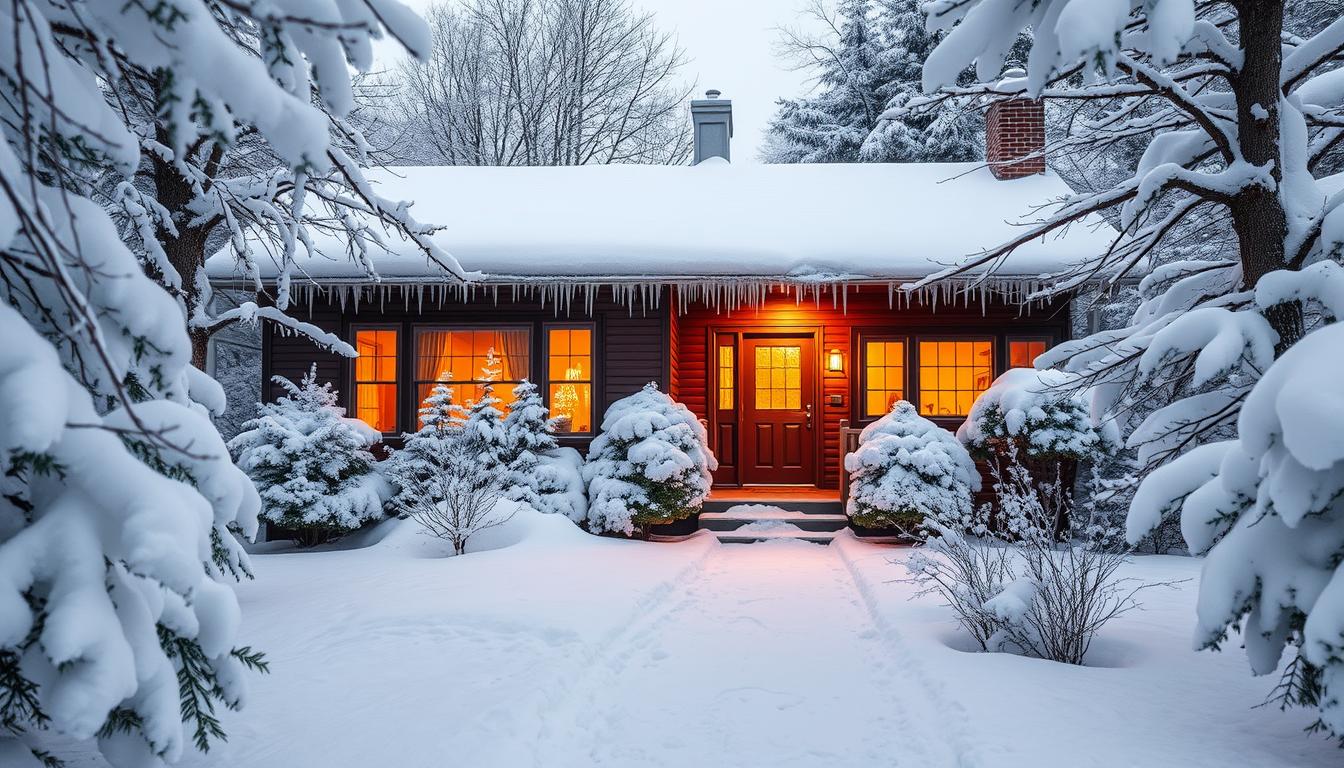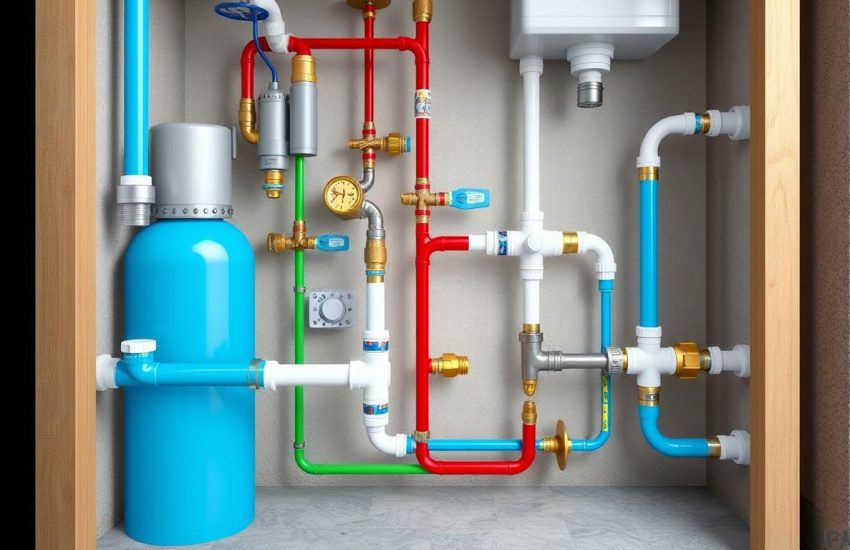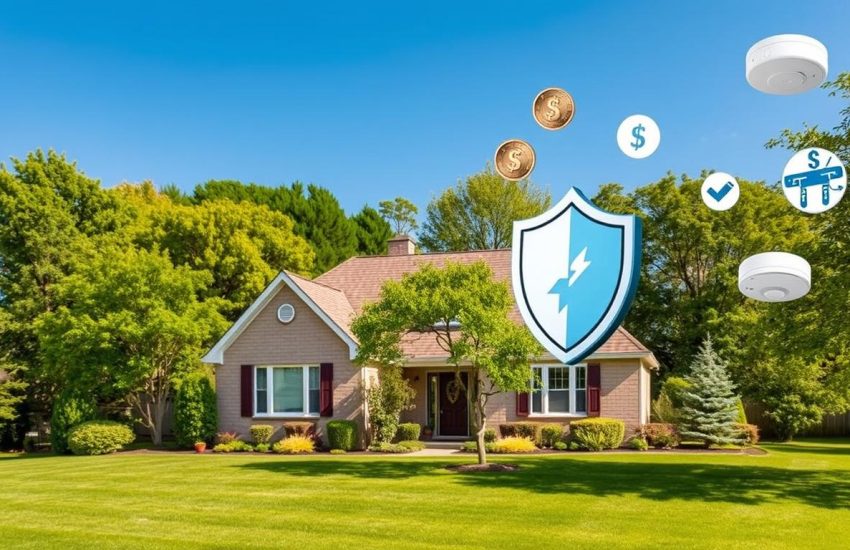Winter-Proofing Your Home: A Complete Guide for Homeowners
When it gets cold, do you think about your home’s safety? Winter can damage your home if you’re not ready. Knowing a few winter-proofing tips can save your home, keep its value, and cut energy costs. This guide will show you how to keep your home warm without spending too much.
Snow starts to fall, and it’s important to protect your home. We’ll cover must-do changes outside and inside your home. We’ll talk about gutter cleaning, sealing leaks, and keeping your home warm. These steps are easy on your budget and keep the heat in.
Before you snug under your quilt, let’s see how to keep your home cozy. We’ll keep your home safe from cold weather and save you money. Follow our guide to get your home ready for winter.
Key Takeaways
- Window insulation kits can make your windows 90% more efficient.
- Programmable thermostats cut heating bills by managing temperatures.
- Choosing the right insulation R-value stops heat loss in attics and basements.
- Carbon monoxide detectors keep the air safe around old furnaces.
- Storing firewood correctly keeps it dry and ready to use.
- Cleaning gutters and using gutter guards prevent future problems.
- Local power companies may offer free checks to help you save money at home.
Why Focus on Winter-Proofing Your Home?
As temps drop, home improvement is key. This focuses on winterization to lessen energy costs and keep heat inside. Winter-proofing helps with comfort, efficiency, and safety through the cold. Making your home ready for winter affects your living conditions and costs for upkeep.
One main reason to winter-proof your home is to cut energy costs. Good insulation and fixing leaks keep the heat in. This lessens the work for your heating system and lowers your energy bills. Also, doing things like shutting off outside faucets stops pipes from bursting. This saves money and prevents water waste.
Regularly servicing your heating system brings warmth and lower bills. This happens because your furnace runs more efficiently. Plus, updating your insulation every 15 to 20 years makes your home warmer. It also helps to lower your energy costs.
To upgrade your home improvement for winter, focus on these key areas. This advice comes from experts:
| Improvement Area | Benefits | Recommended Action |
|---|---|---|
| Energy-efficient windows | Reduces heat loss and condensation | Install low-E coating and gas-filled windows |
| Insulation | Prevents heat loss, better heat retention in attics, walls, and basements | Consult professionals for best R-value and material |
| Exterior siding | Enhances thermal resistance, improves aesthetics | Opt for fiber cement or insulated metal siding |
| Exterior Insulation and Finish System (EIFS) | Improves insulation, enhances exterior look | Apply foam insulation board |
| Professional services | Ensures correct installation and maximum insulation | Hire experienced contractors for draft proofing and siding installation |
Keep paths clear to avoid slips and regularly check heating systems. This makes your home safe and warm. Smart home improvement, especially for winter, lowers heating costs. It also raises your property’s value and keeps it strong.
DIY vs Professional Help
Winter-proofing your home is a big choice. Should you do it yourself or get professional help? Effective winter-proofing makes your home cozy, lowers energy bills, and boosts its value. Both DIY and professionals have important roles in getting your home ready for winter.
DIY projects save money and feel rewarding. Simple things like bleeding radiators or making door snakes from old towels help a lot. Yet, some upgrades really need a pro’s touch.
| Task | DIY | Professional Help |
|---|---|---|
| Insulation Upgrade | Window insulation kits | Upgrading windows to double/triple pane |
| Heating System Maintenance | Changing furnace filters monthly | Yearly boiler service |
| Sealing Leaks | Applying weather-stripping | Sealing ducts to prevent leakage |
| Enhancing Air Quality | Cleaning gutters regularly | Chimney cap installation |
Professional home inspections find problems like bad insulation or secret leaks. Experts with deep market knowledge suggest getting these checks. They say it’s key for saving money and keeping your house efficient in the long run.
In conclusion, mix DIY with professional checks to get your home winter-ready. Handling simple DIY winter jobs is great. But for complex issues, hiring pros can make your home warmer, more efficient, and even raise its market value.
How to Save Money
Heating costs and the price of natural gas are going up. Homeowners want cost-effective solutions to save money on winter-proofing their home. Simple upgrades can really help lower your monthly bills. For instance, adding insulation to water heaters and pipes can warm up water a bit more. This means less energy is needed to heat water. Also, fixing air leaks can save between $200 and $400 each year.
Energy assessments from local power companies are very helpful. They show how to make homes use energy better. Following these tips can make your home more comfy and cut down on energy costs.
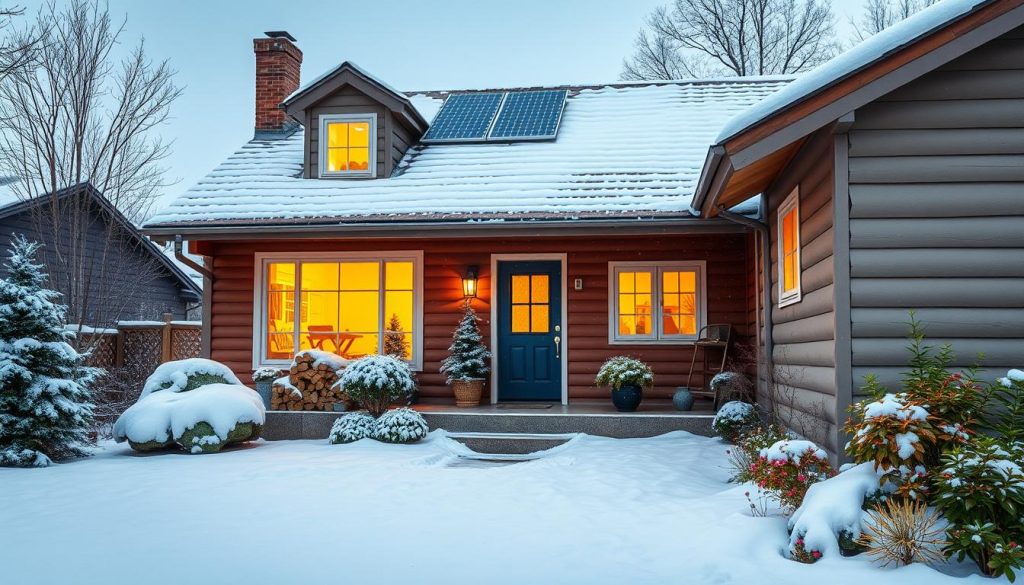
| Upgrade | Cost | Potential Savings |
|---|---|---|
| Proper attic insulation | Varies | Up to 50% reduction in energy bills |
| Duck Heavy-Duty Weatherstrip Seal | $7 | Prevents drafts, reducing heating needs |
| 3M Interior Transparent Weather Sealing Tape | $6 | Seals windows to prevent heat loss |
| Smart thermostat | Varies | Helps save thousands annually |
| GE Paintable Silicone Supreme Caulk | $13 | Seals gaps, improving energy efficiency |
To save even more, follow tips from the Department of Energy. Like setting thermostats to 68°F when you’re home. Lower them when you’re out or sleeping. Also, ceiling fans can push warm air down when reversed during winter. This heats rooms better.
Getting your home ready for winter not only keeps you warm but also saves a lot of money. This is done through cost-effective and sustainable solutions.
Step-by-Step Upgrades
Starting home maintenance tasks for winter-proofing upgrades is crucial. This guide shows you how to make your home warm and use less energy during winter.
First, deal with drafts around doors and windows. Frost King’s silicone tape is great for this. It cuts energy waste by 25-40%.
Insulating your attic is another big step. It keeps heat in and could cut cooling costs by 25%. The U.S. Department of Energy says these areas are where most home energy gets lost. Good insulation is key.
Next, let’s review the benefits of different upgrades:
| Upgrade | Expected Benefit | Potential Savings & Credits |
|---|---|---|
| Weather Stripping with Frost King Tape | Reduces drafts | Prevents 25-40% heating energy loss |
| Installation of Low-E Storm Windows | Improves window insulation | 10-30% energy savings on heating |
| Attic Insulation Upgrade | Increases heat retention | Up to 25% savings on cooling costs |
| Programmable Thermostat | Enhanced temperature control | IRA tax credits available |
| Gutter Cleaning and Guards | Improves drainage system efficiency | Protection against snow/water damage |
Also, programs like the Comfort Home Program offer $1,000 to $4,000 for upgrades. The EmPower+ program helps families make energy-saving improvements.
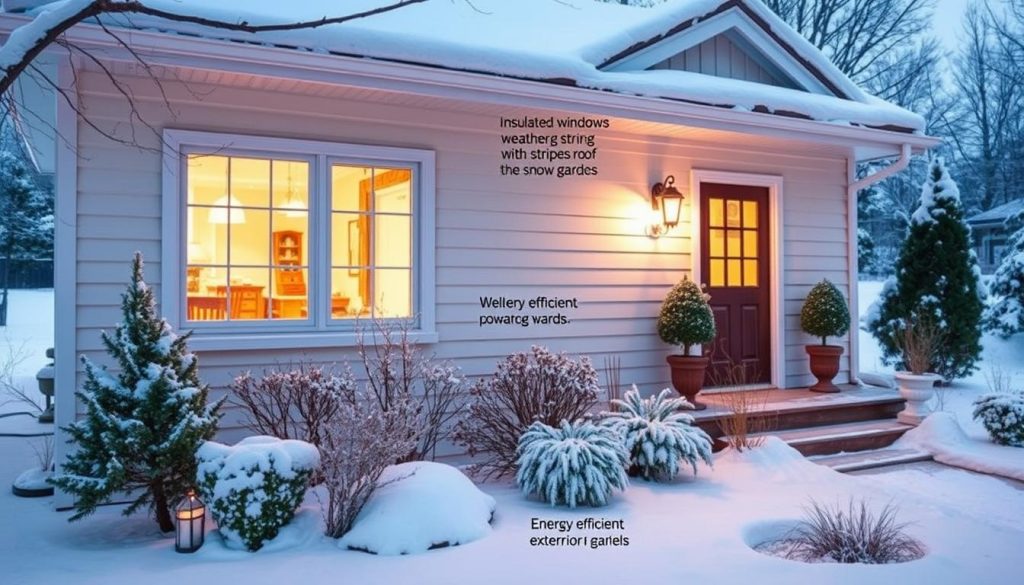
To wrap up, making smart upgrades helps. Your home will be warmer, and you’ll save money all year.
Final Tips for Success
As you finish your winterization tasks, keep in mind that seasonal home readiness is more than insulation. It’s crucial in places with harsh winters, like Pennsylvania. Make sure you have a fireplace or wood stove and enough fuel or wood. This keeps you warm during power outages. Also, have an emergency kit ready for you and your pets. This is important for days when it’s too cold to go outside.
After a storm, having ice melt, snow shovels, and extra gas for your snow blower is key. These help you quickly deal with snow and ice. Make sure your car has an emergency kit. Use kitty litter for better traction on icy paths. Check the protective measures you took, like snow guards. This protects your home from winter damage. For a full maintenance list after winter, check this spring checklist.
Remember, not fixing burst pipes can cost about $5,000. So, investing in things like storm doors is smart. Use green insulation options to save the planet and lower energy bills. Make sure your heating systems work well, and remove snow and ice promptly. This keeps your home safe and saves money. By weatherproofing your home, you make it safer and more energy-efficient.

